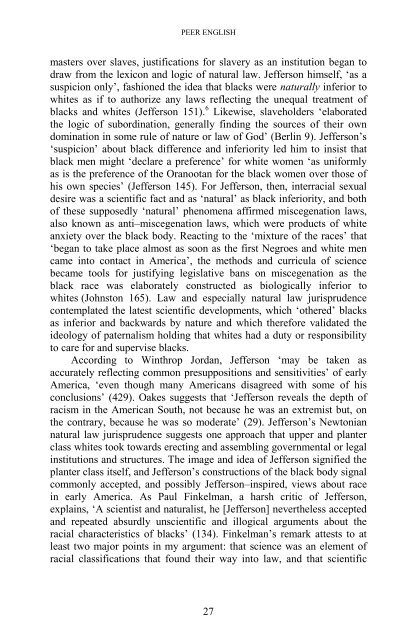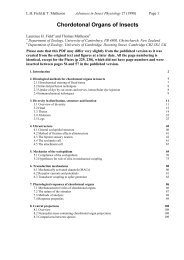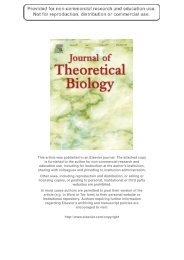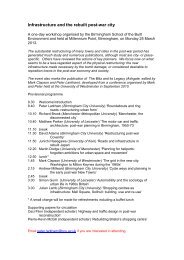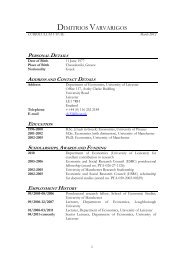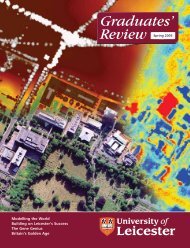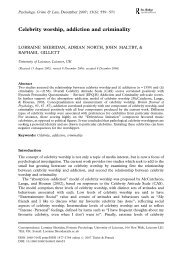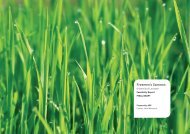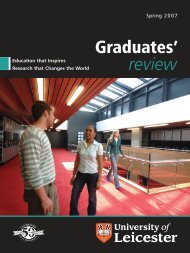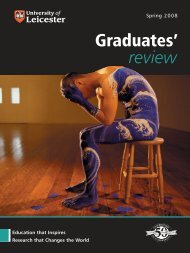From Natural Law to Natural Inferiority
From Natural Law to Natural Inferiority
From Natural Law to Natural Inferiority
Create successful ePaper yourself
Turn your PDF publications into a flip-book with our unique Google optimized e-Paper software.
PEER ENGLISHmasters over slaves, justifications for slavery as an institution began <strong>to</strong>draw from the lexicon and logic of natural law. Jefferson himself, ‘as asuspicion only’, fashioned the idea that blacks were naturally inferior <strong>to</strong>whites as if <strong>to</strong> authorize any laws reflecting the unequal treatment ofblacks and whites (Jefferson 151). 6 Likewise, slaveholders ‘elaboratedthe logic of subordination, generally finding the sources of their owndomination in some rule of nature or law of God’ (Berlin 9). Jefferson’s‘suspicion’ about black difference and inferiority led him <strong>to</strong> insist thatblack men might ‘declare a preference’ for white women ‘as uniformlyas is the preference of the Oranootan for the black women over those ofhis own species’ (Jefferson 145). For Jefferson, then, interracial sexualdesire was a scientific fact and as ‘natural’ as black inferiority, and bothof these supposedly ‘natural’ phenomena affirmed miscegenation laws,also known as anti–miscegenation laws, which were products of whiteanxiety over the black body. Reacting <strong>to</strong> the ‘mixture of the races’ that‘began <strong>to</strong> take place almost as soon as the first Negroes and white mencame in<strong>to</strong> contact in America’, the methods and curricula of sciencebecame <strong>to</strong>ols for justifying legislative bans on miscegenation as theblack race was elaborately constructed as biologically inferior <strong>to</strong>whitest(Johns<strong>to</strong>n 165). <strong>Law</strong> and especially natural law jurisprudencecontemplated the latest scientific developments, which ‘othered’ blacksas inferior and backwards by nature and which therefore validated theideology of paternalism holding that whites had a duty or responsibility<strong>to</strong> care for and supervise blacks.According <strong>to</strong> Winthrop Jordan, Jefferson ‘may be taken asaccurately reflecting common presuppositions and sensitivities’ of earlyAmerica, ‘even though many Americans disagreed with some of hisconclusions’ (429). Oakes suggests that ‘Jefferson reveals the depth ofracism in the American South, not because he was an extremist but, onthe contrary, because he was so moderate’ (29). Jefferson’s New<strong>to</strong>niannatural law jurisprudence suggests one approach that upper and planterclass whites <strong>to</strong>ok <strong>to</strong>wards erecting and assembling governmental or legalinstitutions and structures. The image and idea of Jefferson signified theplanter class itself, and Jefferson’s constructions of the black body signalcommonly accepted, and possibly Jefferson–inspired, views about racein early America. As Paul Finkelman, a harsh critic of Jefferson,explains, ‘A scientist and naturalist, he [Jefferson] nevertheless acceptedand repeated absurdly unscientific and illogical arguments about theracial characteristics of blacks’ (134). Finkelman’s remark attests <strong>to</strong> atleast two major points in my argument: that science was an element ofracial classifications that found their way in<strong>to</strong> law, and that scientific27


